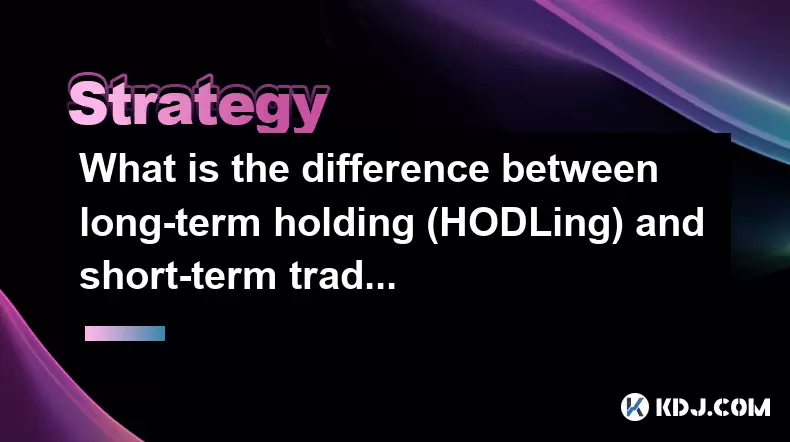-
 Bitcoin
Bitcoin $117700
-1.00% -
 Ethereum
Ethereum $4458
-3.91% -
 XRP
XRP $3.119
0.14% -
 Tether USDt
Tether USDt $1.001
-0.02% -
 BNB
BNB $836.6
-1.56% -
 Solana
Solana $189.5
-3.90% -
 USDC
USDC $0.9998
-0.02% -
 Dogecoin
Dogecoin $0.2335
1.29% -
 Cardano
Cardano $0.9642
1.51% -
 TRON
TRON $0.3539
-1.19% -
 Hyperliquid
Hyperliquid $47.41
-1.84% -
 Chainlink
Chainlink $21.92
-3.28% -
 Stellar
Stellar $0.4286
-0.23% -
 Sui
Sui $3.724
-3.29% -
 Bitcoin Cash
Bitcoin Cash $594.8
-0.78% -
 Ethena USDe
Ethena USDe $1.001
0.04% -
 Hedera
Hedera $0.2501
-2.06% -
 Avalanche
Avalanche $23.96
-4.87% -
 Litecoin
Litecoin $119.0
-2.32% -
 Toncoin
Toncoin $3.473
0.82% -
 UNUS SED LEO
UNUS SED LEO $9.596
0.17% -
 Shiba Inu
Shiba Inu $0.00001301
-0.39% -
 Uniswap
Uniswap $11.03
-0.25% -
 Polkadot
Polkadot $3.935
-2.62% -
 Dai
Dai $1.000
0.01% -
 Bitget Token
Bitget Token $4.564
-1.76% -
 Cronos
Cronos $0.1512
-4.11% -
 Ethena
Ethena $0.7306
-1.09% -
 Pepe
Pepe $0.00001087
-2.68% -
 Aave
Aave $300.2
-4.00%
Is Bitcoin investment risky?
Despite Bitcoin's inherent price volatility, understanding its historical performance and employing sound investment strategies can help investors mitigate risks and potentially maximize their returns.
Jan 12, 2025 at 01:20 pm

Key Points
- Understanding Bitcoin's Volatility and Historical Performance
- Assessing Short-Term and Long-Term Risk Factors
- Examining Market Sentiment and Regulation
- Analyzing Analytical Tools for Risk Assessment
- Evaluating Investment Strategies and Mitigation Techniques
Understanding Bitcoin's Volatility and Historical Performance
Bitcoin, as a decentralized digital asset, is renowned for its inherent price volatility. Historical data reveals periods of significant price fluctuations, often surpassing traditional financial markets. Notably, Bitcoin's price is influenced by a complex interplay of factors, including:
- Supply and demand dynamics: Limited supply and increasing demand can drive prices higher, while decreased demand or increased supply can lead to price corrections.
- Speculative trading: Bitcoin's high volatility attracts speculative traders, whose buying and selling can amplify price movements.
- Macroeconomic events: Global economic conditions, such as interest rate changes or economic uncertainty, can impact Bitcoin's value.
- Regulatory developments: Changes in regulations or legal frameworks can affect Bitcoin's accessibility and demand, thus influencing its price.
Understanding this volatility is crucial for investors to assess potential risks and rewards. While historical performance provides insights, it is essential to recognize that past performance does not guarantee future results.
Assessing Short-Term and Long-Term Risk Factors
Evaluating Bitcoin investment risk involves considering both short-term and long-term factors.
Short-Term Risks:
- Price fluctuations: Bitcoin's rapid price movements can lead to significant gains or losses within a short period.
- Market manipulation: Occasional allegations of market manipulation or fraudulent trading practices can erode trust and lead to price volatility.
- Hacking and theft: Cryptocurrency exchanges and wallets have faced security breaches and theft, highlighting the importance of choosing reputable platforms.
Long-Term Risks:
- Regulatory uncertainty: The evolving regulatory landscape surrounding cryptocurrencies can create uncertainty and potential legal risks.
- Technological obsolescence: Bitcoin's underlying technology may face competition from newer and more efficient blockchain protocols.
- Adoption challenges: Widespread adoption of Bitcoin for mainstream transactions and payments remains a long-term goal.
Examining Market Sentiment and Regulation
Market sentiment and regulatory developments play a vital role in shaping Bitcoin investment risks.
Market Sentiment:
- Bull markets: Periods characterized by widespread optimism and rising prices create a sense of confidence and encourage investment.
- Bear markets: Periods of prolonged price decline and negative sentiment can lead to investor fear and uncertainty.
- Social media sentiment: Sentiment analysis of social media discussions can provide insights into market sentiment and potential price trends.
Regulation:
- Legal frameworks: Governments worldwide are developing regulations for cryptocurrencies, which can impact Bitcoin's accessibility and legitimacy.
- Anti-money laundering (AML) and know-your-customer (KYC) measures: Regulatory requirements aimed at combating illicit activities can increase compliance costs and reduce anonymity.
- Taxation: Bitcoin trading and investments may be subject to taxation, which can affect profitability.
Analyzing Analytical Tools for Risk Assessment
To enhance risk assessment, investors can utilize analytical tools and market indicators:
- Technical analysis: Studying historical price charts to identify trends, patterns, and potential support and resistance levels.
- Fundamental analysis: Examining factors such as blockchain fundamentals, development activity, and adoption metrics to evaluate Bitcoin's long-term value.
- Sentiment analysis: Aggregating data from social media, news, and other sources to gauge market sentiment and potential price movements.
- Volatility indicators: Monitoring metrics like the Bollinger Bands or Moving Average Convergence Divergence (MACD) to assess price volatility and identify potential trading opportunities.
- Risk-reward analysis: Balancing potential profits against potential losses to determine appropriate investment strategies.
Evaluating Investment Strategies and Mitigation Techniques
Managing Bitcoin investment risks requires a combination of prudent investment strategies and risk mitigation techniques.
Investment Strategies:
- Dollar-cost averaging (DCA): Investing regular amounts over time to reduce the impact of price volatility.
- Value investing: Acquiring Bitcoin when it is perceived to be undervalued based on fundamental analysis.
- Hedging strategies: Using financial instruments or alternative investments to offset potential losses.
Risk Mitigation Techniques:
- Diversification: Allocating investments across different assets and cryptocurrencies to reduce portfolio risk.
- Stop-loss orders: Setting price triggers to automatically sell Bitcoin if it falls below a specified level, limiting potential losses.
- Insurance: Exploring cryptocurrency insurance options to protect against theft or hacking.
- Cold storage: Storing Bitcoin in offline wallets or hardware devices to enhance security and reduce the risk of cyberattacks.
FAQs
Q1. Is Bitcoin a safe investment?
A1. Bitcoin investment carries significant risk due to its volatility and other factors discussed in this article. While potential rewards exist, it is crucial to carefully assess one's risk tolerance and investment objectives before investing.
Q2. How do I minimize the risk of Bitcoin investment?
A2. Risk mitigation techniques include diversification, stop-loss orders, insurance, cold storage, and employing sound investment strategies such as dollar-cost averaging and value investing.
Q3. What factors influence Bitcoin's price?
A3. Bitcoin's price is influenced by supply and demand dynamics, speculative trading, macroeconomic events, and regulatory developments.
Q4. How do I stay updated on Bitcoin market trends?
A4. Monitoring market sentiment through social media, news, and technical analysis tools can help investors stay informed about market trends and potential price movements.
Q5. Is it too late to invest in Bitcoin?
A5. The optimal time to invest in Bitcoin depends on individual risk tolerance, investment objectives, and market conditions. Bitcoin's long-term potential remains a subject of discussion and analysis among investors and analysts.
Disclaimer:info@kdj.com
The information provided is not trading advice. kdj.com does not assume any responsibility for any investments made based on the information provided in this article. Cryptocurrencies are highly volatile and it is highly recommended that you invest with caution after thorough research!
If you believe that the content used on this website infringes your copyright, please contact us immediately (info@kdj.com) and we will delete it promptly.
- Kazakhstan's Crypto Leap: Bitcoin ETF and Central Asia's Digital Finance Future
- 2025-08-13 12:45:19
- BlockDAG Presale Blazes Past $371M: Fundraising Frenzy Fuels Crypto Sensation
- 2025-08-13 13:05:21
- Meme Coins: Chasing the 2025 Surge – Which Will Moonshot?
- 2025-08-13 10:25:23
- Bitcoin's Wild Ride: Rally, Pullback, and What's Next
- 2025-08-13 10:25:23
- Bitcoin, Bitmax, and Institutional Demand: A New Era of Crypto Investment
- 2025-08-13 10:45:12
- Solana, ROAM, and Airdrops: What's the Buzz in 2025?
- 2025-08-13 11:35:13
Related knowledge

How to use stop-loss orders to limit potential losses?
Aug 08,2025 at 02:01pm
Understanding Stop-Loss Orders in Cryptocurrency TradingA stop-loss order is a risk management tool used by traders to automatically sell a cryptocurr...

What are the most promising altcoins to invest in?
Aug 10,2025 at 11:42am
Understanding the Role of Private Keys in Cryptocurrency WalletsIn the world of cryptocurrency, private keys are the cornerstone of ownership and cont...

Should I invest in Bitcoin or altcoins?
Aug 13,2025 at 11:35am
Understanding Bitcoin and AltcoinsWhen deciding whether to invest in Bitcoin or altcoins, it's essential to first understand what each represents. Bit...

What are the most important metrics to look at when evaluating a cryptocurrency?
Aug 13,2025 at 11:36am
Market Capitalization: Understanding the Total ValueWhen evaluating a cryptocurrency, market capitalization is one of the most foundational metrics. T...

How to read cryptocurrency charts and use technical analysis?
Aug 08,2025 at 11:08am
Understanding the Basics of Cryptocurrency ChartsCryptocurrency charts are graphical representations of price movements over time. These charts are es...

What is the difference between long-term holding (HODLing) and short-term trading?
Aug 10,2025 at 05:30pm
Understanding HODLing in the Cryptocurrency SpaceThe term HODL originated from a typo in a 2013 Bitcoin forum post and has since become a widely accep...

How to use stop-loss orders to limit potential losses?
Aug 08,2025 at 02:01pm
Understanding Stop-Loss Orders in Cryptocurrency TradingA stop-loss order is a risk management tool used by traders to automatically sell a cryptocurr...

What are the most promising altcoins to invest in?
Aug 10,2025 at 11:42am
Understanding the Role of Private Keys in Cryptocurrency WalletsIn the world of cryptocurrency, private keys are the cornerstone of ownership and cont...

Should I invest in Bitcoin or altcoins?
Aug 13,2025 at 11:35am
Understanding Bitcoin and AltcoinsWhen deciding whether to invest in Bitcoin or altcoins, it's essential to first understand what each represents. Bit...

What are the most important metrics to look at when evaluating a cryptocurrency?
Aug 13,2025 at 11:36am
Market Capitalization: Understanding the Total ValueWhen evaluating a cryptocurrency, market capitalization is one of the most foundational metrics. T...

How to read cryptocurrency charts and use technical analysis?
Aug 08,2025 at 11:08am
Understanding the Basics of Cryptocurrency ChartsCryptocurrency charts are graphical representations of price movements over time. These charts are es...

What is the difference between long-term holding (HODLing) and short-term trading?
Aug 10,2025 at 05:30pm
Understanding HODLing in the Cryptocurrency SpaceThe term HODL originated from a typo in a 2013 Bitcoin forum post and has since become a widely accep...
See all articles

























































































